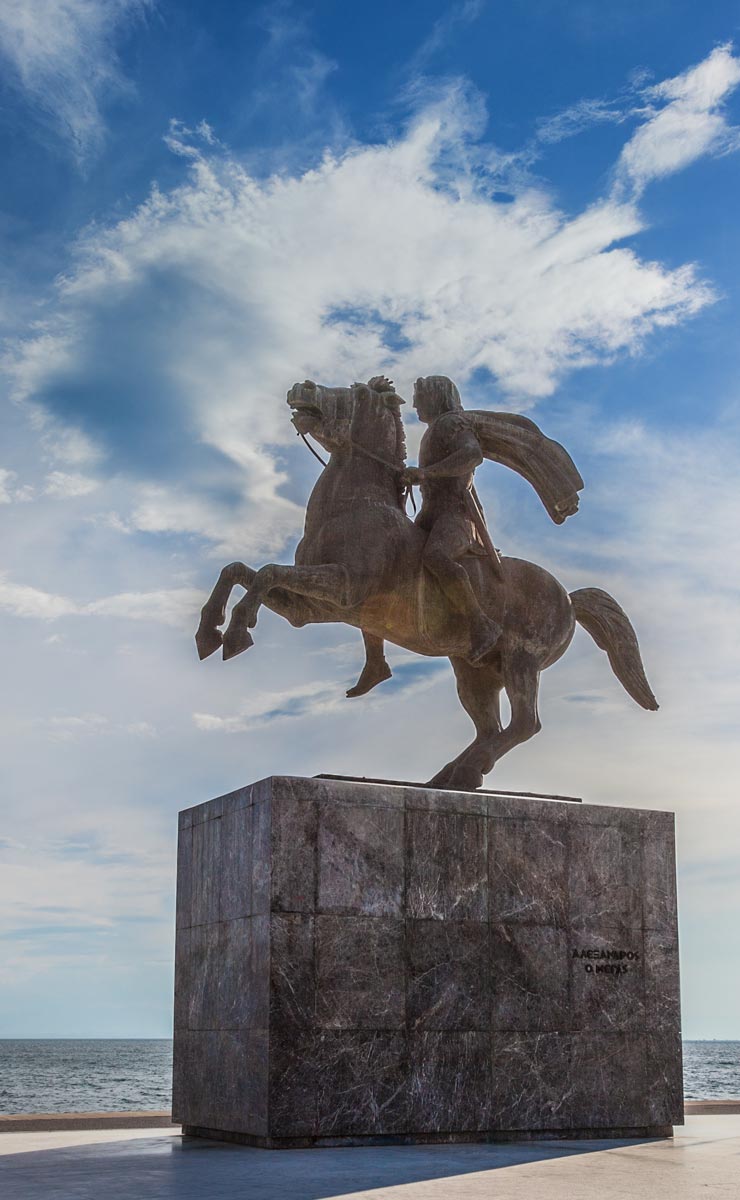Macedonia, covering most of northern Greece, shares international borders with Albania, Former Yugoslav Republic of Macedonia, and Bulgaria. At 25% of the land area of the mainland, it is Greece's biggest province. Its border on the east is the Nestos River, and on the west, the Pindus Mountains. Macedonia is the birthplace of the greatest conqueror the world has ever seen, and, arguably, the world's greatest philosopher. What was it about this region that produced two over-achievers like Alexander and Aristotle?
Macedonia's variety encompasses Mt. Athos, the most easterly of the three-fingered Halkidiki Peninsula, and a place so dedicated to the contemplation of God that women are not allowed on its grounds, and Thessaloniki (or Salonika), which is world-famous as one of the best party cities in the world. It's elevation runs from sea level to the highest point in Greece, Mt. Olympus. It has ski resorts in its western mountains, beaches in Chalkidiki to rival anything to be found on the Aegean islands, and hot springs spas in the foothills of the mountains.
Macedonia has the most beautiful autumn foliage in Greece, its largest river, and its greatest amount of winter rainfall, turning it into a lush, green region of fruit orchards, olive groves, and world class wineries.
The ancient rulers of Macedonia from about 700 BC till 300 BC, including Alexander the Great and his father, Philip of Macedon, were Argeads (or Argives), who traced their origins to Argos, a chief city of antiquity in the Peloponnese which sent a colonizing party northward about 800 BC. The name "Macedon" derives from an ancient Greek adjective meaning "long" or "slender." The Macedonians were a kind of Highlander of ancient Greece. Their characteristic symbol was the 16-pointed Star of Vergina, also known as the Argead Star.
The region is full of ancient ruins, including Alexander's capital at Pella, the still older capital at Aigai (near Vergina), Philippi, where the first Christian church in Europe was established by the peripatetic Apostle Paul, Dion, Macedonia's ancient religious center, and Thessaloniki, which is also known as the world's biggest outdoor Byzantine museum.
Salonika, Greece's second city, is a fascinating amalgam of contemporary and ancient. Its over 80,000 university students imbue it with youth and vitality, and its ancient Byzantine churches and monasteries testify to its rich religious heritage. Its Archeological Museum is one of the best in Greece, featuring sarcophagi and gold jewelry recovered from Macedonian tombs. For centuries Salonika was a model of harmonious diversity, its population roughly one-third Christian, one-third Muslim, and one-third Jewish. It is the most beautiful large city in Greece, with a sweeping harbor bordered by cafes and restaurants. Thessaloniki's most interesting features can all be found in the city center by foot. Local busses carry visitors to the heights above the city, where, in the Upper City, dramatic views of the city, of the Gulf of Thermi, and of Mt. Olympus, across the Gulf, can be enjoyed while sipping a coffee at one of many cafes.
Macedonia has a rich diversity of villages and small cities, including Edessa with her spectacular waterfalls, Kastoria with its beautiful mountain lake, Kavalla with its Roman Aqueduct, and Drama, with its Old City and the artesian waters of Agia Varvara Springs.
Macedonia may not be as touristically developed as other parts of Greece, but that can be an advantage as the authenticity of northern Greek culture, cuisine and destinations remain largely unspoiled by overdevelopment. Northern Greeks are every bit as hospitable as their southern counterparts, and will help make your visit to this region unforgettable.












